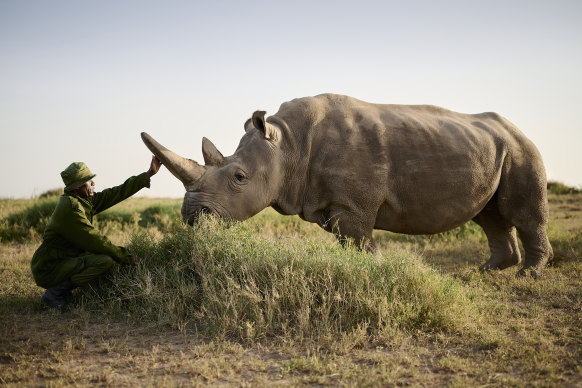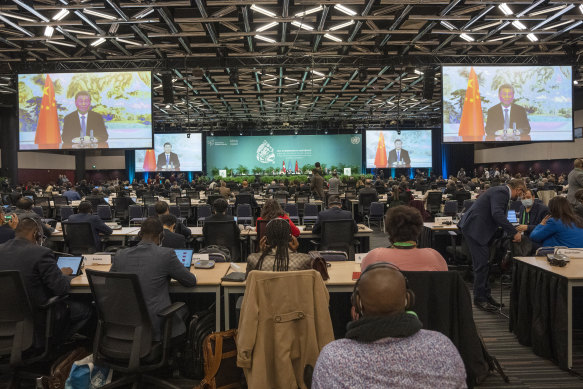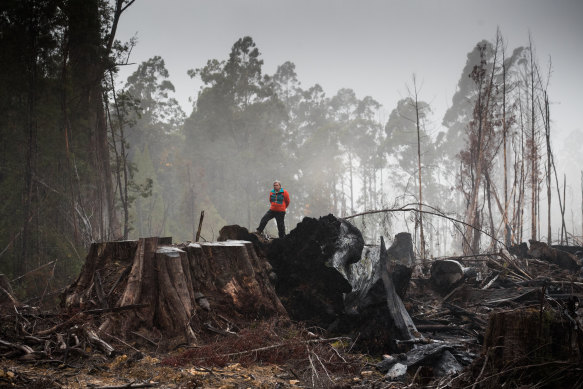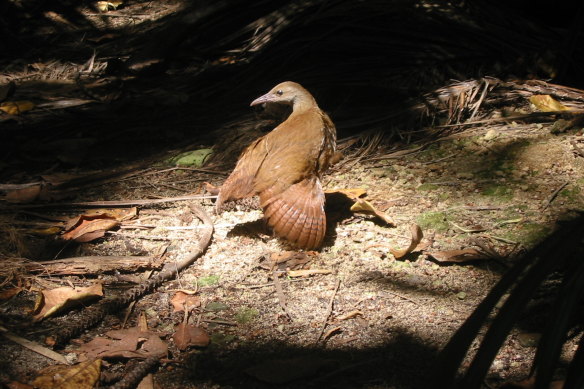
What was decided?
Countries wrangled over the final text of the agreement for seven hours in a meeting that ended at 3.30am on Monday, Montreal time. They eventually agreed to 23 targets, most significantly the “30x30” target to protect 30 per cent of land, freshwater and oceans by 2030.

Najin the northern white rhino at Ol Pejeta. She and her daughter, Fatu, are the only two northern whites in existence.Credit:Mark Williams
There will also be targets for protecting ecosystems such as rainforests and wetlands, and recognising the rights of Indigenous peoples.
“It was inspiring to see first-hand how Indigenous knowledge and continuous living culture was so prominent in Montreal through the advocacy of Indigenous peoples,” said Country Needs People board director Rarrtjiwuy Melanie Herdman, who travelled to the meeting in Canada.
There was a goal of “sustainable use” of biodiversity to recognise that species and habitats provide services for humanity, such as food and clean water.
Australia, led by Environment Minister Tanya Plibersek, pushed for many of the critical inclusions in the pact – including the 30 per cent protection goal – but was unable to get global backing for a version of its own domestic zero-extinctions policy, announced earlier this year.

Chinese President Xi Jinping makes a video address at the opening of the high level segment at the COP15 biodiversity conference.Credit:The Canadian Press via AP
Instead, the global agreement pact says that the human-induced extinction of threatened species should be halted by 2050.
“This to me is a real concern – we can’t wait another 28 years to stop extinctions because we’re going to have a very different planet by that stage,” said Wintle.
What was missing?
Financing was one of the most contentious issues, with 70 African, South American and Asian countries walking out of negotiations at one point.
There was a commitment for US$30 billion per year to flow from wealthy to poorer countries by 2030, but this was not legally binding and scant in detail.

A campaigner in a logging coupe in the Huon Valley, Tasmania. Australia still logs native forests, including old-growth forests in Tasmania. Credit:Jason South
Some African countries complained the agreement had been pushed through undemocratically by China, with claims it had disregarded objections from the Democratic Republic of Congo.
Unlike similar climate agreements, this biodiversity pact lacks a mandatory “ratcheting” mechanism, that requires governments to increase their action and targets.
In Australia, scientists estimate that it would take about $2 billion each year in the federal budget to properly fund the recovery of the country’s nearly 2000 threatened species and ecological communities.

Conservation measures can work: the population of the endangered Lord Howe Island woodhen has more than doubled to about 565 since a rodent control program was implemented on the island in 2019.
And despite observers welcoming the “30 by 30” target as a positive first step, they were disappointed that Australia brought no new funding commitments to the meeting.
Even Australian areas that are already protected, like national parks and Indigenous protected areas, are overrun with feral foxes, deer, camel, cats and invasive plant species like gamba grass.
“If we let our planet sink into the depths of the sixth mass extinction, it will take tens of millions of years or more to recover,” said RMIT sustainability lecturer Sarah Bekessy.
Get to the heart of what’s happening with climate change and the environment. Our fortnightly Environment newsletter brings you the news, the issues and the solutions. Sign up here.









 Add Category
Add Category